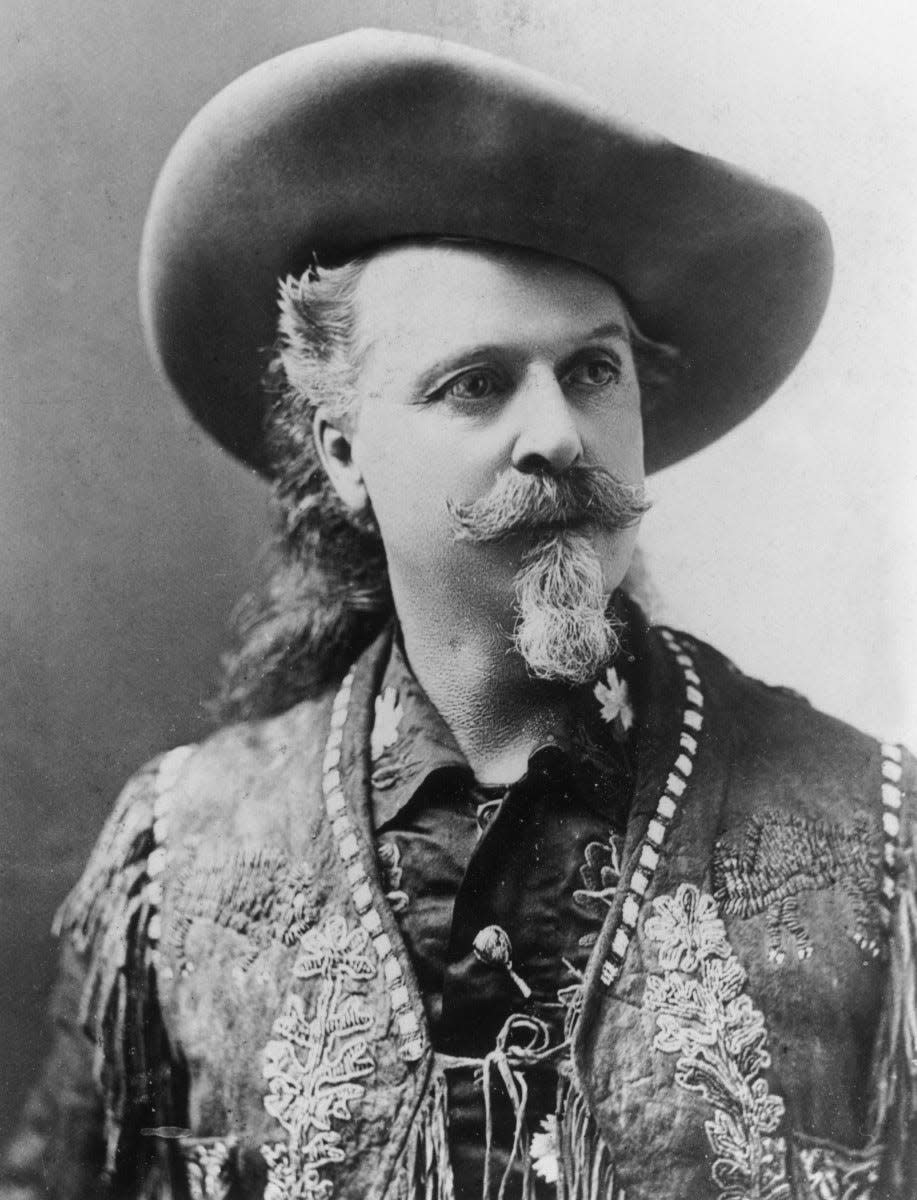Historical Happenings: Buffalo Bill's Wild West train wrecks in Davidson County in 1901
- Oops!Something went wrong.Please try again later.
Over 120 years ago, Davidson County was the site of an accident that destroyed a popular traveling rodeo and almost killed one of the most famous women in the world at the time.
On Oct. 29, 1901, “Buffalo Bill” Cody’s Wild West Show was traveling by train to Norfolk, Virginia for its last show of the season after a successful performance in Charlotte the night before. During their journey one of two trains in the show were hit head-on by an oncoming freight train, killing hundreds of horses and severely injuring one of the stars of the show, Annie Oakley.
Want to know more about what is happening in Davidson County? Support local journalism, subscribe to The Dispatch.
William Frederick Cody got the nickname "Buffalo Bill" after the American Civil War, when he had a contract to supply Kansas Pacific Railroad workers with buffalo meat. He founded Buffalo Bill's Wild West in 1883, taking his large company of performers and animals on tours in the United States, Great Britain and continental Europe. The show was a depiction of life in the western United States and included a sensationalized exhibitions of the Wild West, including Native Americans; cowboys, buffalo, horses and sharpshooting.
On that day in 1901, an engineer with Southern Railway traveling south received a message to allow Buffalo Bill’s northbound show trains to pass and pulled onto a sidetrack in Lexington. Unfortunately, he missed a critical detail that the Wild West show traveled on two trains, according to the North Carolina Department of Natural and Cultural Resources.
After the first show train had passed through Lexington, the freight train engineer returned to the main track and was traveling at approximately 45 miles per hour when he rounded a curve near Linwood and saw the second oncoming show train.

According to news reports at the time, although both crews hit the emergency brakes both trains were traveling too fast to stop and hit each other head on. The impact knocked some of the five show train’s cars into Swearing Creek while others were thrown into a nearby cornfield.
According to an article in The Salisbury Post, a witness described the horrible scene that day.
“Two engines seemed to have tried to devour each other. One had run halfway inside the other, and then they reared up on the tracks like two giant beasts in deadly combat. All the cars on both trains were made of wood and were shattered into thousands of pieces upon impact,” said the witness.
Although no one was killed, about 100 horses were killed or were so severely injured that they had to be put down, including Cody’s favorite saddle horse, “Old Pap”.
Some eyewitnesses reported that when Cody arrived at the scene, he blinked back tears witnessing the carnage. One account said he chased some of the freight-train crew who had jumped clear of the train before impact with his gun drawn.
Railroad reports later showed the engineer of the freight train fled the scene of the accident and jumped on a train in Salisbury for “parts unknown” never to be heard from again.
Another devastating result of the accident was the injury to one of the stars of the Wild West Show, Annie Oakley who was asleep on the second train. Reports stated she was thrown from her bed when the car landed into a swamp on the north side of the track.
Oakley suffered severe spinal cord injuries which left her temporarily paralyzed. She was taken to a hospital in Winston-Salem and then New York where she spent several months recovering from multiple surgeries.
According to historians, although she remained friends with Cody, the accident was the end of Oakley’s 16-year association with Buffalo Bill’s Wild West show. In a letter to a friend, she wrote that the stress of the train wreck caused her hair to turn white overnight.
In the hours after the accident, local newspapers reported that several Davidson County residents came to the aid of the performers, some of whom were still dressed in their costumes. There was also a herd of buffalo in a nearby field.
In an article published on the anniversary of the accident in 1961, then-72-year-old Willie Cox told The Salisbury Post what he remembered of the accident.
“It was quite a show for the people of Linwood,” said Cox, who was 12 at the time of the accident. “Indians and cowboys camped in a pasture near the Linwood railroad station and walked back and forth to the store, carrying goods to the camp. Buffalo, horses, and cattle that survived the wreck were pastured near Linwood for several weeks.”
Several items involved in the wreck were recovered by local residents including a saddle owned by Oakley that is still on display at the Davidson County Historical Museum. It was also believed Cody gifted some horses and cattle to local landowners. It is rumored that the offspring of some of those cattle can still be found in Linwood.
Buffalo Bill’s Wild West Show was eventually able to return to performing, but according to news reports it never recovered from the train wreck.
Cody sued Southern Railway and the court awarded him $65,000 in damages, but the cancelled show in Danville, Virginia, allegedly cost him $10,000 that he would never recover. For the next several years, the Wild West Show struggled to survive before being turned over to creditors in 1913.
Until he died in 1917, Cody described the train accident in Davidson County as a “calamity that forever changed his life”, according to a 2011 article in Our State Magazine.
The Dispatch is publishing a series of articles dedicated to historical events in commemoration of the bicentennial anniversary of Davidson County this year.
This article originally appeared on The Dispatch: Historical Happenings: Buffalo Bill's 1901 train wreck in Davidson County

